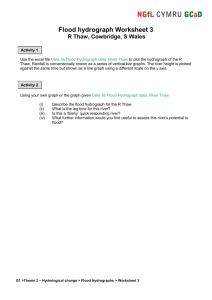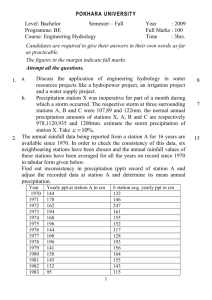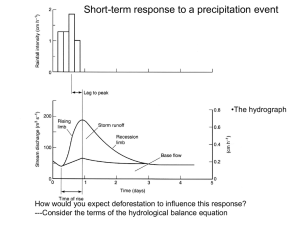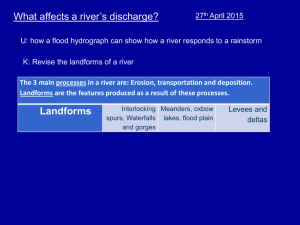Introduction to Flood hydrographs
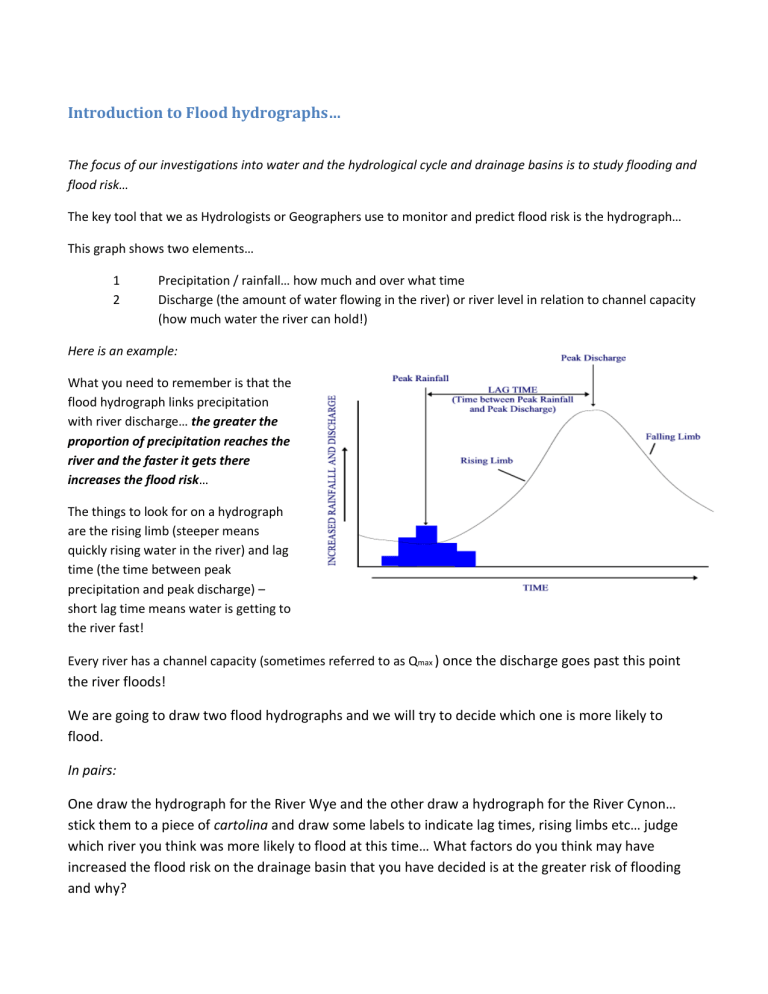
Introduction to Flood hydrographs…
The focus of our investigations into water and the hydrological cycle and drainage basins is to study flooding and flood risk…
The key tool that we as Hydrologists or Geographers use to monitor and predict flood risk is the hydrograph…
This graph shows two elements…
1
2
Precipitation / rainfall… how much and over what time
Discharge (the amount of water flowing in the river) or river level in relation to channel capacity
(how much water the river can hold!)
Here is an example:
What you need to remember is that the flood hydrograph links precipitation with river discharge… the greater the proportion of precipitation reaches the river and the faster it gets there
increases the flood risk…
The things to look for on a hydrograph are the rising limb (steeper means quickly rising water in the river) and lag time (the time between peak precipitation and peak discharge) – short lag time means water is getting to the river fast!
Every river has a channel capacity (sometimes referred to as Q max
) once the discharge goes past this point the river floods!
We are going to draw two flood hydrographs and we will try to decide which one is more likely to flood.
In pairs:
One draw the hydrograph for the River Wye and the other draw a hydrograph for the River Cynon… stick them to a piece of cartolina and draw some labels to indicate lag times, rising limbs etc… judge which river you think was more likely to flood at this time… What factors do you think may have increased the flood risk on the drainage basin that you have decided is at the greater risk of flooding and why?

